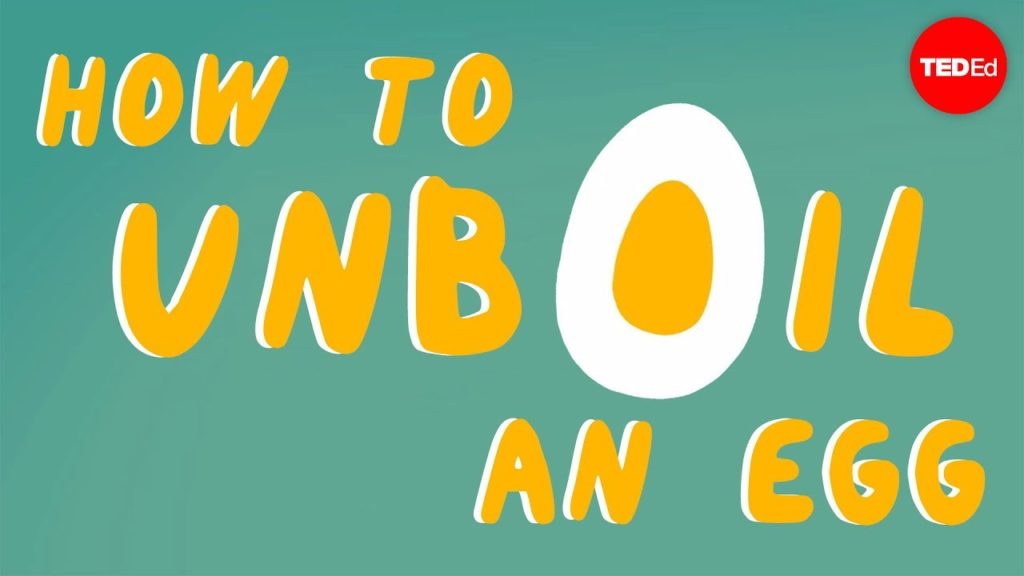How to unboil an egg

Is uncooking something possible? Let’s make an attempt to unboil an egg.
We know that egg is made of proteins which are really big molecules made up of amino acids. When the egg is in the water, they fold up in a structure that is kind of big huge clumps. A raw egg is liquid because all of its protein can slide past each other, but when it’s exposed to heat, the proteins start to vibrate so they cannot stay hooked together in their clumps, making the molecules spread out again when the egg white is heated, this unraveling process is known as denaturing. Proteins denature and tangled together and they cant slide past each other anymore, so that is why when an egg boiled it becomes one big solid chunk.
To unboil, an egg we have to untangle all the proteins, Adding an engrossing fact is that protein folding is reversible so a chemical named urea is preferred which is good at making proteins unstick.
Here’s how you do it
- Add urea to the amount of water making it an 8 molar solution of urea.
- Grind up the cooked egg then add it to the area which will dissolve the egg white i.e it will pull the proteins individually apart
- Once you’ve diluted the solution of urea, the protein should fold back to its original form.
- Also, add a phosphorous buffer to the solution to maintain the neutral pH
We end up with a super-concentrated solution of egg whites and urea but it will take time to denature the proteins because urea keeps them apart. Try adding this egg white solution to buffered water which will be diluted, the proteins will be separated and they spontaneously fold back together.
The fundamental science that went into unboiling the egg has led to a number of applications and that is all about clean, green technology, biodiesel, solar cell application. Unboiling eggs seem odd but have major scientific advances so boiling the egg white for 20 minutes approximately before being added to the urea solution helps in liquefying the solid egg whites, breaking the bonds between proteins after which scientist prefer to put in a Vortex Fluidic Device, designed at Flinders University in Adelaide that spins it at a speed of 4000 tube rotations per minutes which ignites stress causing the proteins to re-form. This process makes working with proteins facile and abates the squander.






Responses